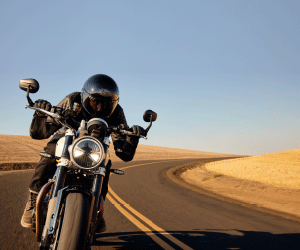Concept motorcycles are usually divided into two groups. On one side are the near-production machines that give an idea of something that will appear in showrooms a few months later, and on the other side are the fantasy projects that attract crowds to exhibition stands for a few days, never to be seen again after their brief moment of glory.
Honda’s RC-E, which debuted at the Tokyo Motor Show in 2011, had all the characteristics to firmly be in the latter group. Twelve years ago, there were few serious indications that Honda had imminent plans for an electric sports bike and the RC-E – a race replica with a battery inspired by the company’s 1960s MotoGP bikes – seemed to be little more than an intriguing “what if…?”

But now, almost 12 years after the RC-E was first introduced, the same motorcycle has become the focus of a new patent application from Honda, clearly showing that elements of the RC-E, if not the complete bike, are still being developed in the company’s R&D department.

However, it also shows that a large part of the RC-E philosophy is still current. The frame, for example, uses the electric motor box as a structural element between the front rails and the swingarm, which rotates with the motor shaft concentrically. The idea is obviously to create the straightest line possible between the steering head and the rear wheel, and the profile images make it very clear that this arrangement achieves that.
The big difference between this patent and the motorcycle presented in 2011 is the context. In 2011, there were no serious attempts by major motorcycle companies to create an electric motorcycle that was more convincing than a scooter. Currently, the landscape is completely different. Virtually all major motorcycle companies, including Honda, have planned the release of a large number of electric motorcycles in the very near future, and we are simply waiting to see what they will do. Honda could do much more than just recover the RC-E and revitalize it with updated motor and battery technology.

The new patent also gives us the first look under the fairing of the RC-E. The engine itself has always been visible and remains a key element of the design, but the patent reveals that there are three large battery packs, each with a unique shape, under the fairing. The first, designated as B1 in the drawings, is located under the “tank” and above the frame rails. The second, B2, is larger and is situated between the frame rails, extending down to the area where a combustion engine would normally be. Finally, there is a third battery, B3, which is shaped to fit in the “belly” of the bike.
The engine itself is offset to the right side of the bike, leaving space for the rear shock absorber to run alongside it on the left side, and is installed in a structural box bolted directly to the rear frame rails. Although the patent does not specifically mention it, it appears that the bike is intended to be liquid-cooled, with a radiator conventionally positioned behind the front wheel.
It is far from certain that the patent application will be successful – it will be up to the patent officials to decide if the arrangement is sufficiently novel to be protected by a patent – it is clear that major elements of the RC-E, including the semi-frame and the structural engine, are still actively in development and, with Honda set to launch its first major electric bike in 2024, it is much more relevant than it was at the Tokyo Motor Show in 2011.











